Command Palette
Search for a command to run...
Stability AI Officially Launches Its Commercial Transformation: Open Source Boom but Profit Crisis, Can Top Management reshuffle/product Restructuring Save It?

On August 5, 2025, Stability AI released "Stability AI Solutions," a product for enterprises. In an official statement, CEO Prem Akkaraju said that the product is designed to provide generative AI solutions for enterprise creative production. "Enterprises need more than just a platform; they need a partner, and that's exactly what Stability AI Solutions provides."This release is seen as a strategic transformation for Stability AI from an open community to enterprise services, and it also means that this company, which champions "open source," is beginning to officially bow to "commercialization."
This seemingly "back on the commercial track" transformation exposes the core paradox of the Stability AI open-source movement: Stability AI proved the possibility of open-source AI in two years, only to reveal its limitations within the same two years. Last year, amidst the departure of its founder, Stability AI raised only about $80 million in new funding, while the company's projected spending on cloud infrastructure alone exceeded $99 million in one year. This company, hailed as an "open-source rival to OpenAI," was once seen as an idealistic symbol in the fight against OpenAI.However, within just three years, it fell into a survival predicament of financing crisis, internal strife among senior management, and product stagnation, caught between capital, operations, and competition.The ideals of open source are becoming increasingly fragile in the face of market choices.
From "open source pioneer in the community" to "enterprise service provider," Stability AI's business transformation directly questions the structural contradictions of open source AI: when the boundaries of generative AI models as products become blurred, can enterprises survive in the wave of openness? And under Stability AI's individual predicament, the sharing spirit of democratizing AI technology is being rewritten by market logic.
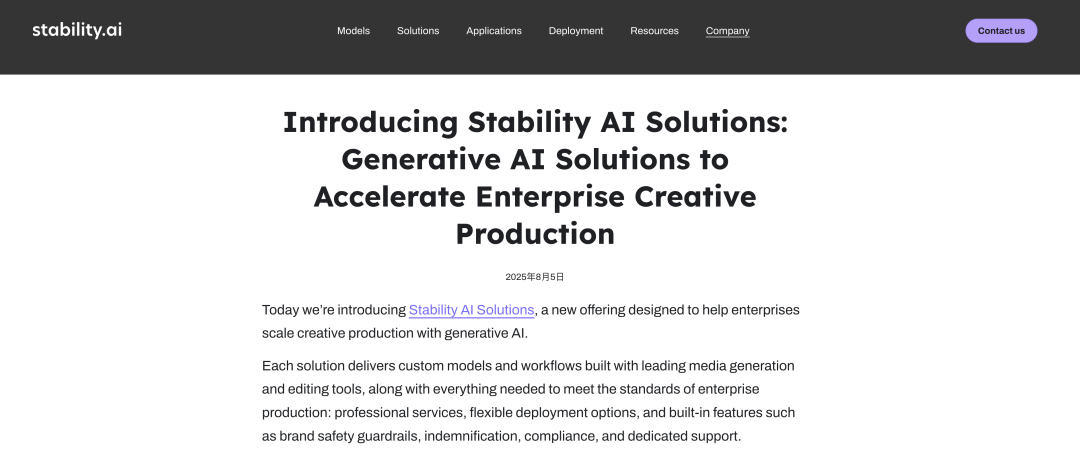
As an open-source rebel, Stability AI is rapidly rising in the market.
Founded in London, UK in 2020, Stability AI became the first open-source AI company dedicated to developing groundbreaking technologies that benefit humanity and the world. Co-founder and CEO Emad Mostaque stated, "AI promises to solve some of the most pressing challenges facing humanity, but its true potential can only be realized by making the technology open and accessible to everyone."By collaborating with the open-source community and independent researchers to replicate closed-source AI capabilities at low cost, Stability AI’s core strategy and corporate vision has become a driving force.
"Stability AI is giving power back to the developer community and opening the door to groundbreaking new applications. In this space, an independent body that supports these communities can create real value and change," Emad Mostaque noted in a BigDATAwire report.
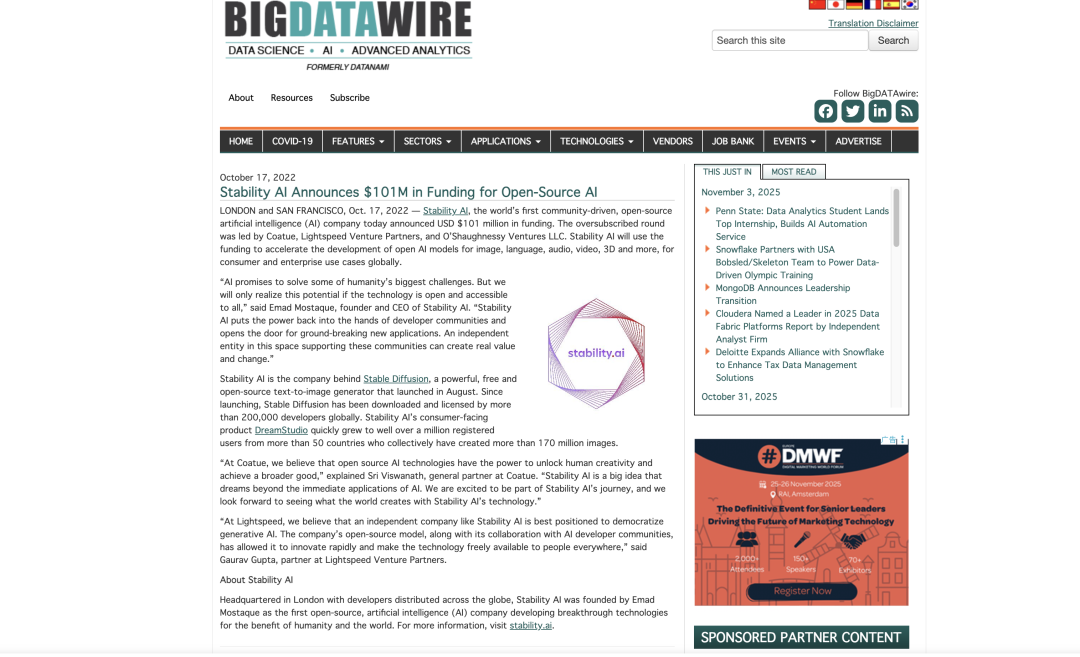
In August 2022, Stability AI released Stable Diffusion 1.0, validating the commercial potential of generative AI in the market. While industry giants are strengthening their commercial moats with closed-source strategies, Stability AI has fully opened up the model's weights and source code, and launched the DreamStudio platform.By making Stable Diffusion accessible to ordinary creators through a visual interface, a preliminary closed loop from model to product has been achieved.
By sharing its models, Stability AI achieved global dissemination at extremely low cost. Downloads of Stable Diffusion 1.0 rapidly surpassed 10 million within two months, and derivative projects on GitHub flourished, forming a considerable open-source ecosystem. On October 17th of the same year, Stability AI announced the completion of a $101 million funding round led by Coatue and others, bringing its valuation to over $1 billion. In an interview with The Verge, Emad Mostaque stated, "Anyone can use this generator, which means that everyone from 3-year-olds to 90-year-olds can create freely."
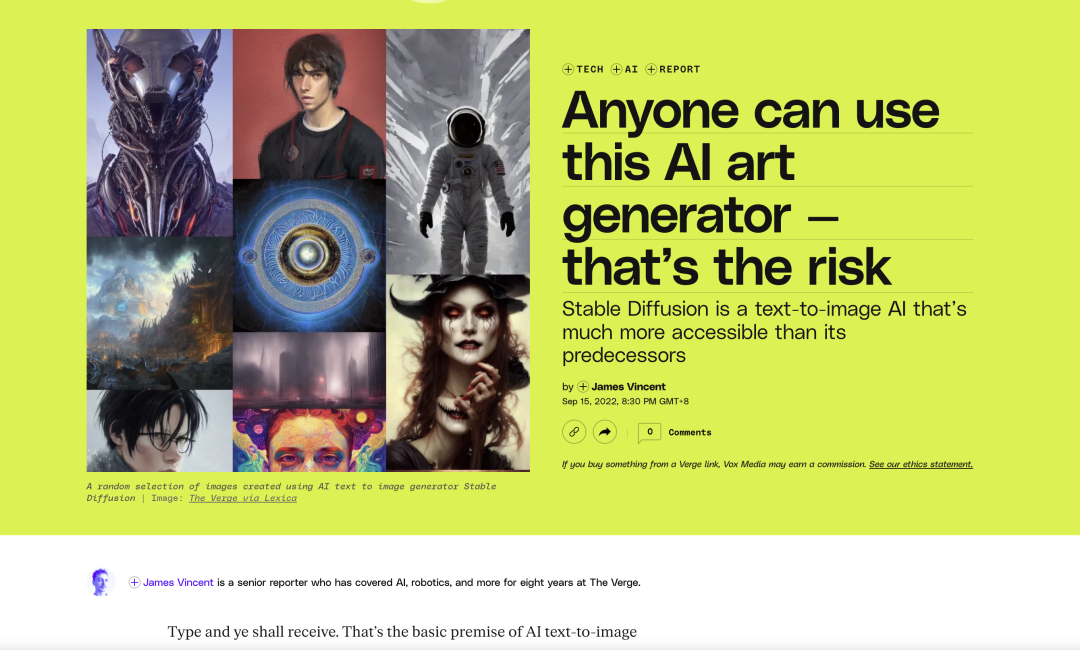
In an interview with TechCrunch, Mostaque reiterated Stability AI's open-source democratic nature: "No one except our employees has a vote—billionaires, large funds, governments, or anyone else controlling a company or the community we support have no votes. We are completely independent. We plan to leverage our computing power to accelerate the development of open-source foundational artificial intelligence."
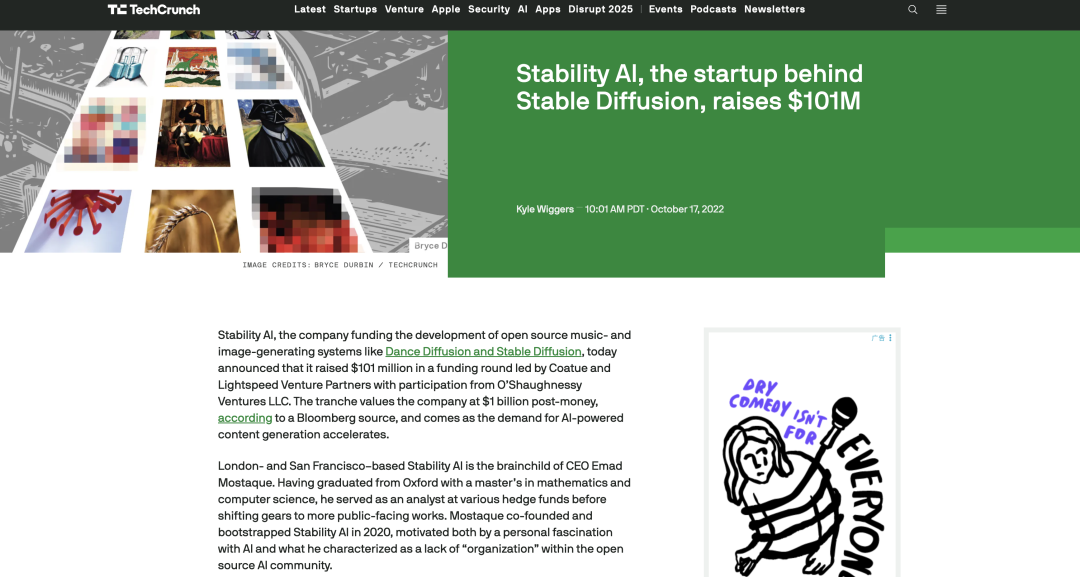
In 2023, Stability AI continued to focus on multimodal generative models, pushing forward the development of language models (such as Stable LM), audio, video, 3D and other fields.Stability AI's growth path of "openness + community + iteration" has enabled it to establish a broader technological footprint within the open-source ecosystem. According to official statistics, Stability AI's Discord community reached hundreds of thousands of members in 2023. In the same year, the company also established R&D centers in London, San Francisco, and Tokyo, with more than 200 employees.
From its initial founding principles to model releases, from community expansion to funding breakthroughs, Stability AI's early explosive growth seemed to foreshadow a pivotal moment in the industry. However, behind this rapid growth, undeniable structural concerns are emerging in its open-source business: the contradictions between the boundaries of technological openness, business sustainability, and organizational control are gradually becoming apparent.
Growth Illusion and Collapse of Control: Business Shrinkage Behind the Open Source Boom
Despite Stability AI's early breakthroughs in the field of open-source generative AI, its rapid growth in the early stages also hinted at a fatal flaw: the diffusion effect brought about by open source is backfiring on Stability AI's own commercial space.
The open-source release of Stable Diffusion has fueled explosive growth in the global creative community, but it has also put companies in a passive position regarding governance and control.The model is widely copied, misused, and frequently infringed upon externally.However, Stability AI has extremely limited ability to regulate its own technology, which has repeatedly weakened the company's product boundaries and profitability.
This imbalance began to surface in the second half of 2023. Between July and September, Stability AI released Stable Diffusion XL (SDXL 1.0), which made progress in generation quality and performance, garnering positive technical reviews, but the market response was somewhat lukewarm. Meanwhile, Stability AI's commercialization path stalled: the company attempted to build a revenue stream through its DreamStudio paid platform, Stable Enterprise API, and subscription tools and custom model services, but with limited profitability. According to Reuters, the company generated less than $5 million in revenue in the first quarter of 2024, while incurring losses exceeding $30 million and owing nearly $100 million to cloud service providers.
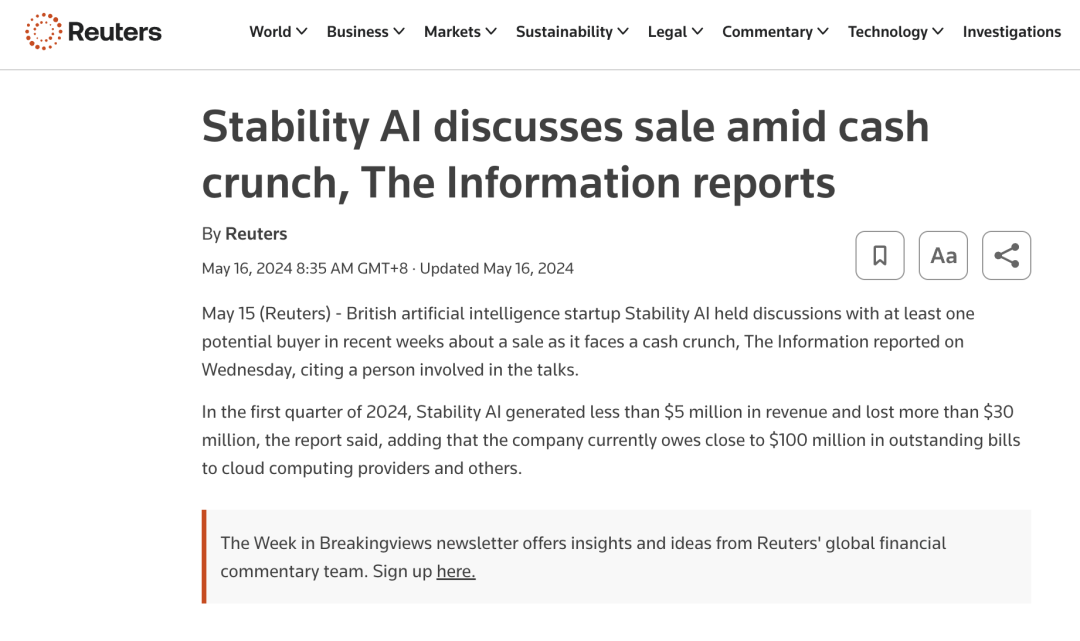
While user growth on the DreamStudio platform has slowed, a large number of replicas and improved models have emerged in the open-source community. More and more users are choosing free replicas, and few enterprise customers are willing to pay for the service, leading to a rapid loss of paying users. Meanwhile, facing the rise of competitors such as Midjourney, OpenAI DALL·E 3, Runway, and Pika,Stability AI's market share is being eroded, and its structural contradiction of "high technology popularity but slow revenue growth" is gradually emerging.
In a 2023 exclusive report, Semafor revealed that, according to reliable sources, Stability AI was burning through cash to grow its business, attempting to boost sales by hiring new executives. "Stability AI has already burned through a large portion of the $100 million it raised at the end of last year, and according to sources, two anonymous venture capitalists interviewed by Semafor are reconsidering whether to participate in an upcoming funding round. Despite high brand recognition and rapid early user growth, its revenue is still insufficient to offset high server costs and the expenses of rapidly recruiting employees globally."
Furthermore, the report also stated that amid the crisis of slowing growth, some employees have lost confidence in CEO Mostaque's leadership style.
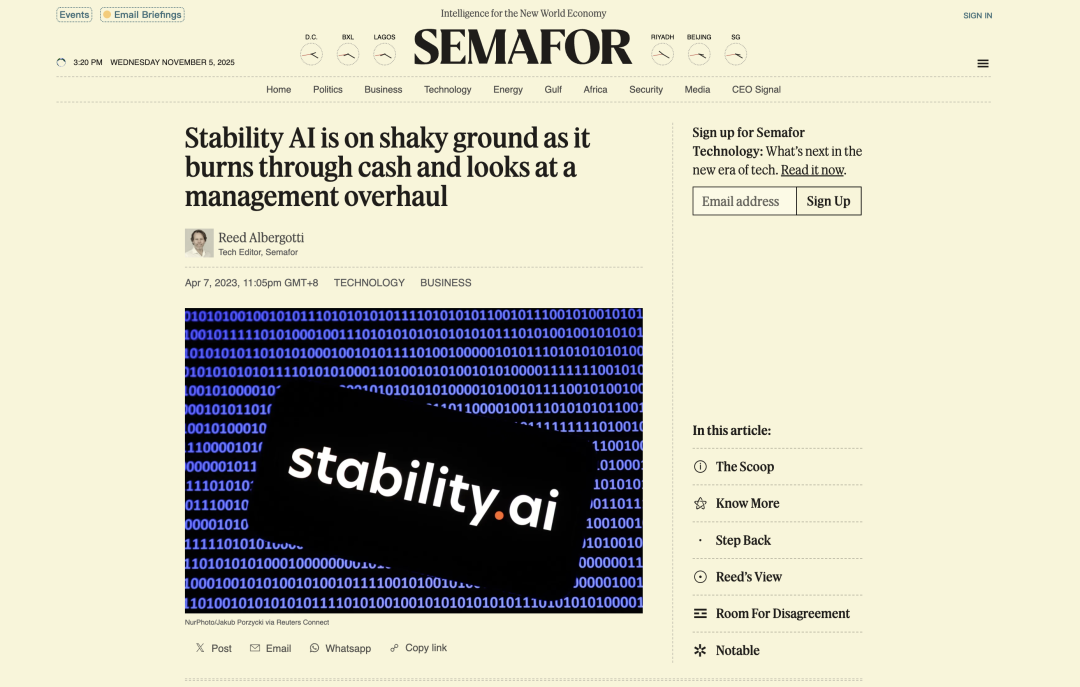
In early 2024, Stability AI announced the upcoming release of Stable Diffusion 3, emphasizing its improvements in model safety and ethical alignment in an attempt to rebuild public trust and address public skepticism about the company's business. However, rumors of severe staff turnover and increasing financial pressure surfaced. Multiple media outlets, including Decoder, Forbes, the Financial Times, and Reuters, reported that Stability AI was facing a funding crisis, not only defaulting on payments to some researchers and partners, leading to the departure of core engineers to join competitors such as Runway and Hugging Face, but also experiencing funding difficulties, with some investors pushing for a change in management.
Subsequently, these rumors seemed to have been proven to be true.
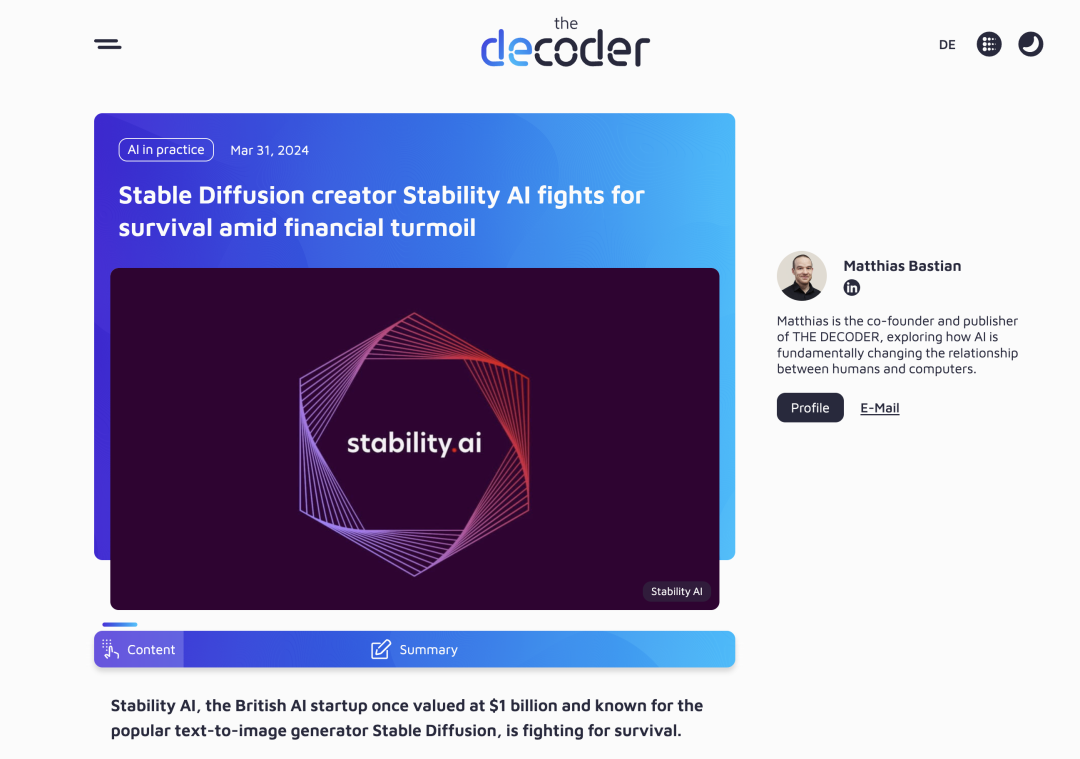
At this time, the conflict between founder Emad Mostaque and investors was also brought to light.Whether to continue adhering to the open-source approach or to push for commercial transformation has become a key debate within Stability AI.According to The Information, in an October letter to Stability AI's management, Coatue's management explicitly demanded Mostaque's resignation, stating that his leadership had led to the departure of several senior executives and plunged the company into financial distress.
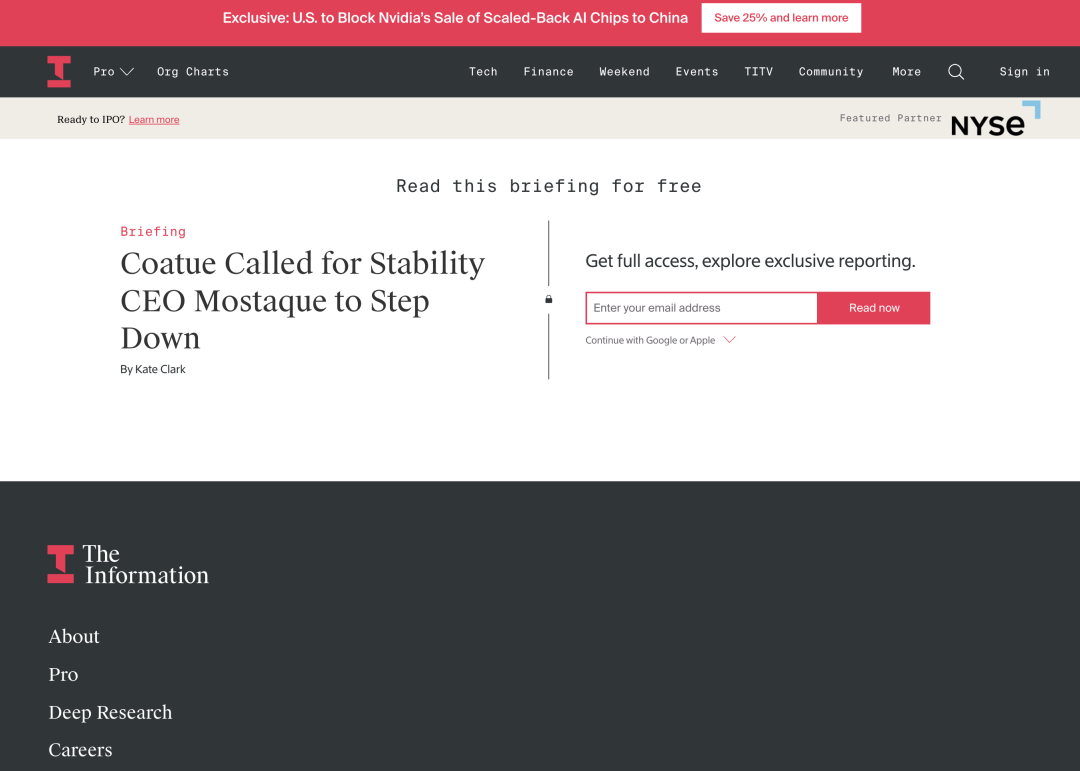
The rumors proved to be true. In late May, Emad Mostaque announced his resignation as CEO, with former Warner executive Prem Akkaraju taking over. The official statement described it as a "strategic restructuring," but it was widely seen as a forced power transition.
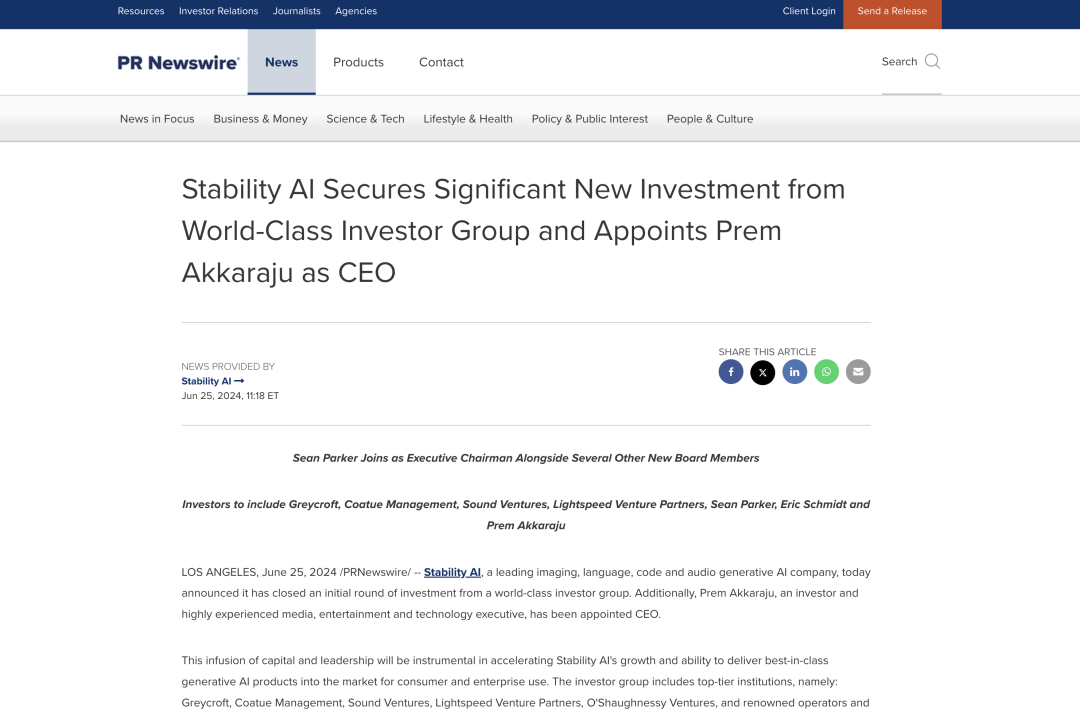
Stability AI's formal entry into a restructuring phase signifies the end of its open-source idealism era—a once-flagship company symbolizing "technological democratization" now faces the realities of market operations. However, Stability AI's trajectory reveals a deeper issue: an irreconcilable structural tension exists between the innovative drive brought by open source and commercial constraints. When models become public resources rather than exclusive products, how can companies ensure their control and profit margins are not compressed?
As Stability AI undergoes enterprise transformation, open-source AI is entering its next phase of restructuring.
In fact, open-source AI is not a new topic. In a 2024 interview, when discussing OpenAI and open source, Musk directly expressed his skepticism, saying, "How is this possible? OpenAI's original mission was open source and non-profit, but now it is really trying to maximize profits."

In fact, Stability AI's rapid gain of attention in the market is largely due to its counter-mainstream narrative:Countering the closed strategies of large companies, advocating for accessibility for everyone, and building a shared generative AI platform—these concepts have laid the foundation for Stability AI's identity as "open source as its core competitive advantage."
Emad Mostaque, the founder of Stability AI, once criticized OpenAI for "betraying the original intention of open source," but the reality is even more brutal: OpenAI's closed-source monopoly allows it to gain profits and control, while Stability AI's openness weakens the company's sustainability.
Furthermore, R-Street's editorial also noted that open-source AI once symbolized the ideal of technological democratization, but when generative models gain social influence, openness itself becomes a public act: "When AI models begin to have social influence, they are not just technological assets, but also governance issues. If open-source companies lack a corresponding accountability system, even with innovative outputs, they may fall into a trust deficit due to a lack of governance."
The limitation of Stability AI lies to some extent in its misaligned strategy of operating a "public ecosystem" with the mindset of a "product company".
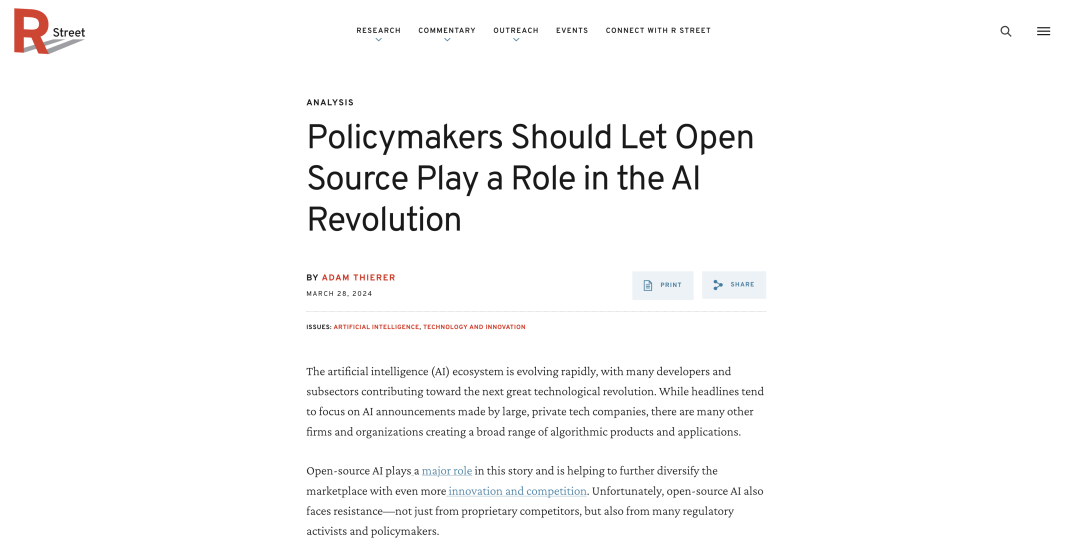
In fact, Stability AI has explored ways to diversify its revenue streams. For example, Stability AI launched a new subscription model, announcing that it would commercialize some of its models through a paid subscription model. Mostaque also considered reselling its cloud computing resources leased from Amazon to generate more revenue. However, Medium blogger Kondi points out that this transformation is not a voluntary exploration after achieving profitability, but rather a patching up after cracks appeared in the open path. "The company has already taken on the risk of shifting from a dissemination-first to a revenue-first approach before a profitable path has been fully established."
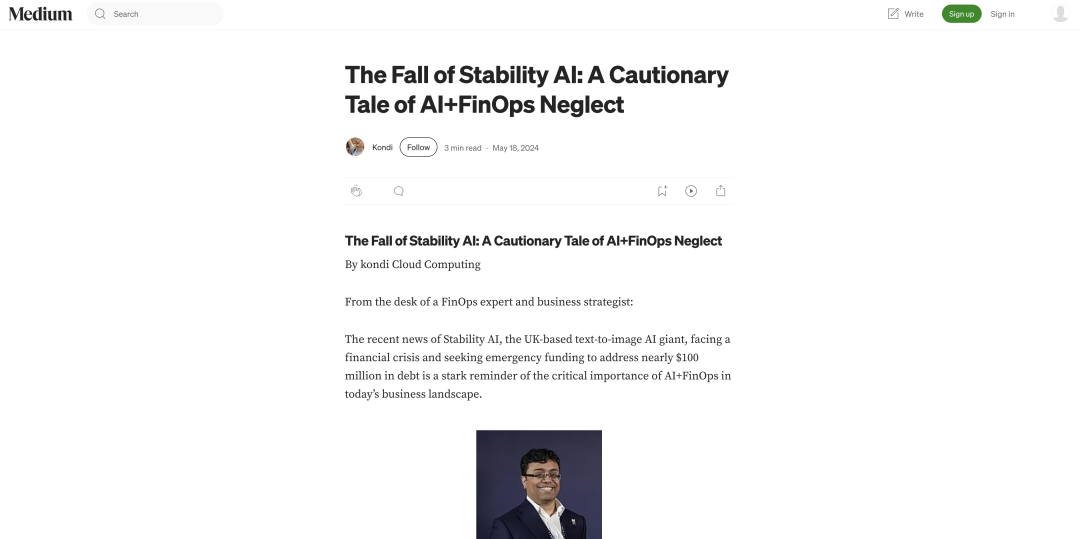
However, the story of the open-source model is far from over.
Against the backdrop of a continuously increasing demand for open-source LLMs, the enterprise community is accelerating the competition between open-source and closed-source systems, hoping to further pursue control, customization, and cost-effectiveness.The competition between open source and open source is reshaping the value chain of the AI industry.According to VentureBeat, downloads of the Meta open-source model exceeded 400 million in 2024, a tenfold increase year-on-year. From technological equality to brand trust, the surge in open-source model adoption is driving leading companies to adopt open-source alternatives.
In an interview with VentureBeat, Groq CEO Jonathan Ross acknowledged that the percentage of Groq's customers using the open model has increased significantly, stating, "The open model will ultimately prevail, and most people are genuinely worried about being restricted by vendors."
In addition, Baskar Sridharan, VP of AI and Infrastructure at AWS, acknowledged this trend, saying, "We are definitely seeing this, with a significant increase in the use of publicly available models."
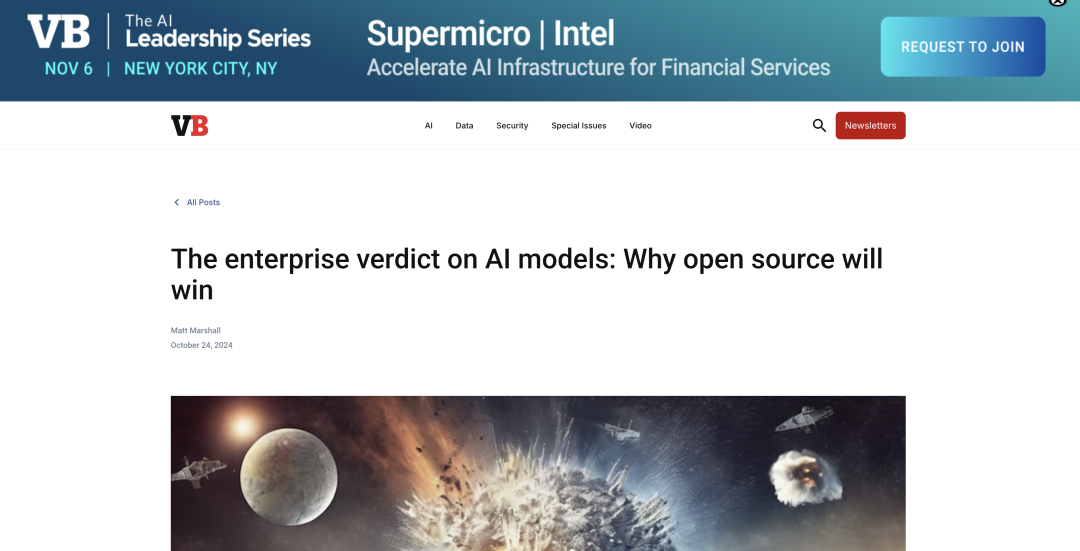
In summary, as a paper published on arXiv, "Open-Sourcing Highly Capable Foundation Models," points out, "If the open-source model is not accompanied by supporting systems and mechanisms, the resulting gaps in the accountability system may be far more fatal than the technological breakthroughs themselves when it scales up." From the perspective of trust and responsibility, open source is no longer just a technological philosophy, but a governance commitment.
In other words, Stability AI's corporate transformation, beyond its individual company evolution, signals a restructuring of the open-source AI ecosystem at the business, governance, and institutional levels. Whether the commercialization path chosen by the company is effective and worth promoting remains to be seen.
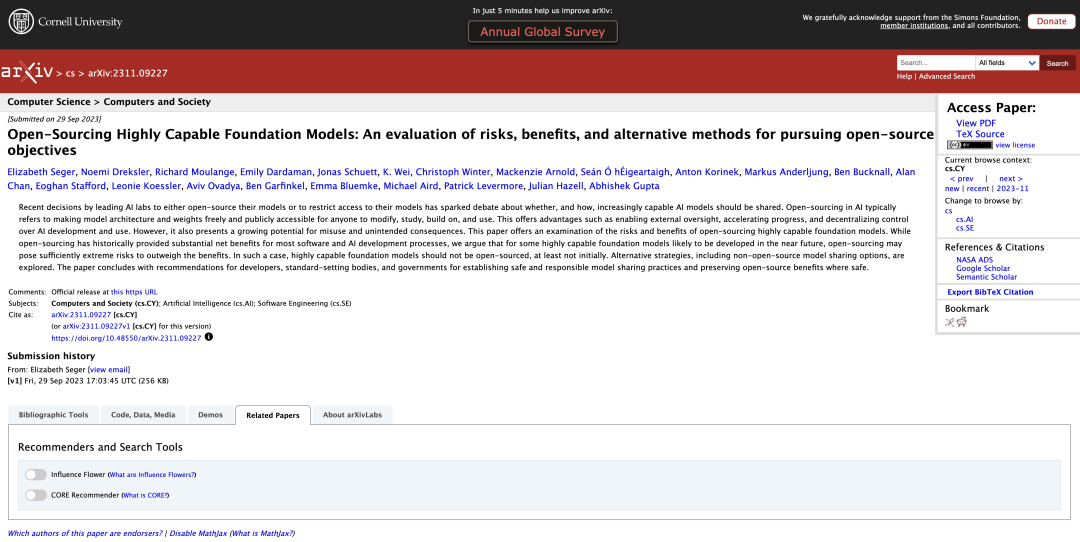
Reference Links:
1.https://arxiv.org/abs/2311.09227
2.https://venturebeat.com/ai/the-enterprise-verdict-on-ai-models-why-open-source-will-win
3.https://medium.com/%40human.gold/the-fall-of-stability-ai-a-cautionary-tale-of-ai-finops-neglect-56389d5c9819
4.https://www.rstreet.org/commentary/policymakers-should-let-open-source-play-a-role-in-the-ai-revolution/
5.https://sifted.eu/articles/stability-business-model
6.https://stability.ai/news/stable-diffusion-public-release